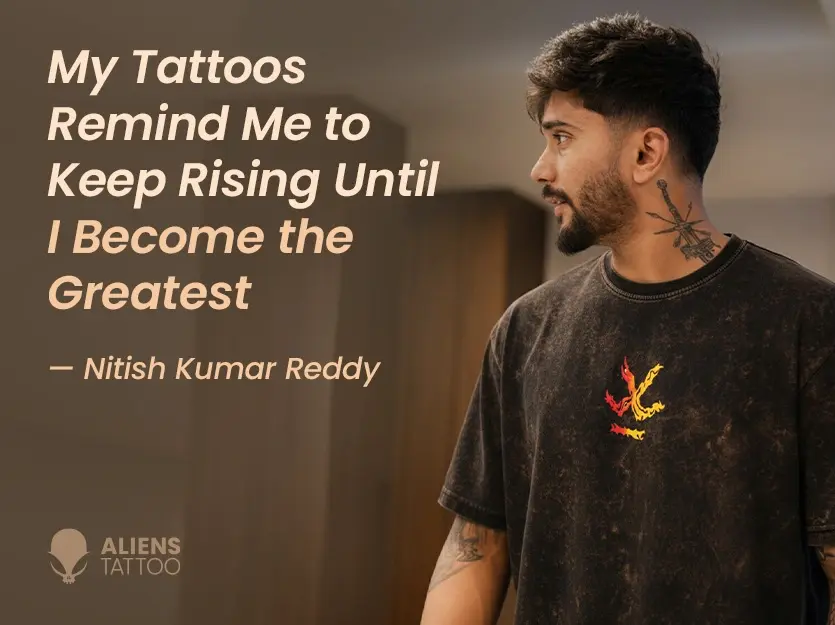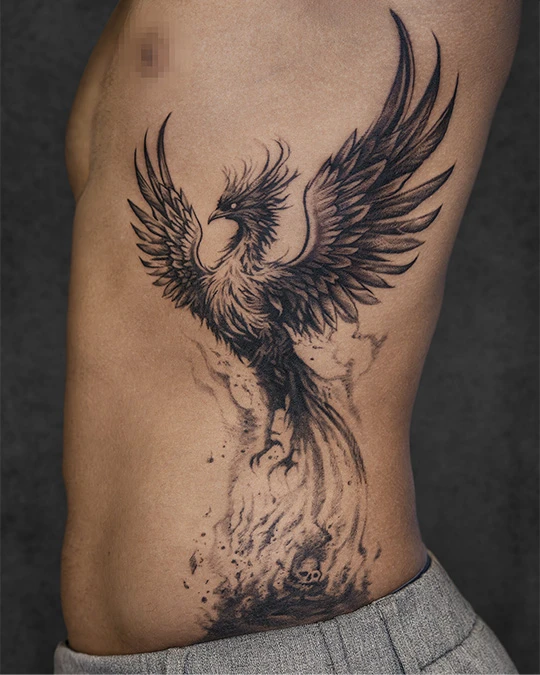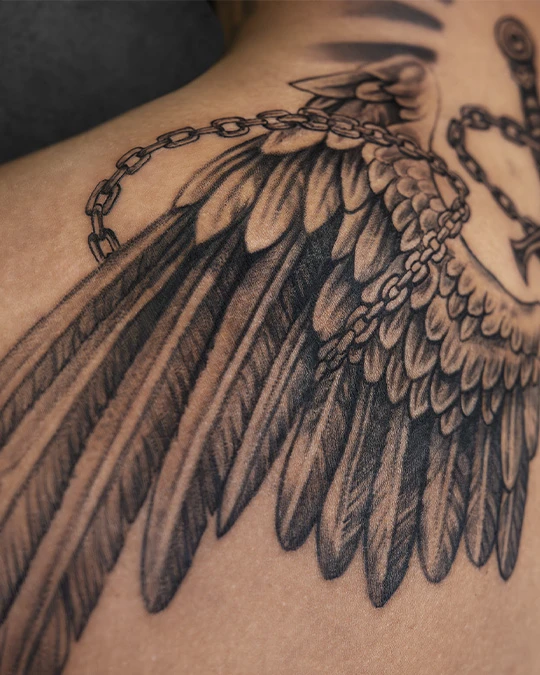My Tattoos Remind Me to Keep Rising Until I Become the Greatest — Nitish Kumar Reddy
- Team Aliens
- Sep 23
- 4 min read
Updated: Oct 3

At 21, Nitish Kumar Reddy already lives in two worlds. In one, the crowd roars, his name echoes across the stadium, and every boundary feels like destiny fulfilled. In the other, there is silence, the pressure of expectation, the sting of setbacks, the private battles no one sees.
In those quiet lows, when the applause fades, Nitish was searching for something that could anchor him. Something that would remind him that every fall carries within it the promise of a rise. For him, tattoos aren’t just art but a medium of expression, a way to reflect stories of survival, balance, and resilience, serving as guides through the chaos of sport and life.
The reason behind the Tattoos

Nitish’s previous tattoos were born out of struggle. Twice in his career, he stood on the edge of opportunity, only for injury to strike and take it away. Each time, the setback cut deep. Each time, he felt lost, unsure if he could climb back. In moments when form dipped, when fatigue crept in, when doubt took over, he wanted something that would push him back to his best.
But those lows also became turning points. In the silence of recovery, he found a new way to remind himself that it wasn’t over. He turned to tattoos, not as a trend, but as anchors.
Those earlier tattoos became his silent companions, fueling his comebacks and helping him prove himself on the field.
Now, facing a third injury, Nitish knew he needed more than reminders. He needed symbols that could capture not just the fight, but the philosophy he has grown into. He wanted tattoos that would reflect his deeper understanding of balance, resilience, and renewal, not just the will to come back, but the wisdom to carry both light and shadow on the journey.
This time, the tattoos had to be different. They had to be larger, sharper, and layered with meaning, the kind of designs that could serve as lifelong touchstones, guiding him not only through comebacks but through every stage of his growth. For that, he needed more than an artist. He needed storytellers who could see beyond ink and translate his journey into timeless art.
The Search for the Right Artist

This time, Nitish knew the stakes were higher. He didn’t just want another tattoo; he wanted a piece of art that could translate his story into something timeless. To do that, he needed the right hands, the right vision, the right storytellers.
That search led him to Aliens Tattoo. As a Wrogn ambassador, Nitish was already close to a creative community that believed in bold expression. Through that circle, and through conversations with fellow players who already carried Aliens’ work on their skin, from Virat Kohli to Hardik Pandya, the connection felt inevitable.
The more Nitish saw of Aliens’ work, the more convinced he became. This wasn’t just tattooing. This was art that spoke, art that lived. With the confidence of recommendations and the impression of world-class artistry, he entrusted his story to us.
The Design

When Nitish came to Aliens, he didn’t bring a random idea. He brought a philosophy. He wanted his tattoos to become living symbols, reminders of resilience, balance, and renewal that would speak back to him whenever he faltered. The challenge was not just to design something beautiful, but to give his philosophy a form that could live forever on his skin.
That process began with long conversations. Sameer Kureshi listened carefully to Nitish’s story, the struggles with injury, the comebacks, the constant tug-of-war between doubt and determination.
From those dialogues came a design direction: two symbols, each carrying layers of meaning, each reinforcing the other.
The Phoenix — Rising from the Ashes
The first element chosen was the Phoenix. Its story is as old as time: a bird that burns, only to rise from its ashes stronger than before. For Nitish, the connection was immediate. His injuries had felt like fire consuming everything he had built, yet each comeback had been his rebirth.
But at Aliens, it wasn’t enough to simply draw a Phoenix. The design had to embody motion, intensity, and life. Sameer sketched wings that stretched with both power and grace, flames that curled with fluidity instead of stiffness. The Phoenix was placed along his ribs, a notoriously painful area, because the placement itself mirrored the message. Every breath, every movement, would remind him that endurance and pain are part of renewal.
The Sword Between Wings — The Warrior’s Balance
The second piece was larger, more complex, and perhaps even more symbolic: a sword flanked by two wings across his back. One wing was dark and commanding, the other pure and luminous.
The sword itself stood not as a weapon of destruction, but as a guardian of equilibrium. “In life there’s always a good side and a bad side,” Nitish explained.
“The sword protects both. It reminds me that no matter what’s happening, I’m still fighting.”
For Allan, the challenge was immense. The wings had to flow symmetrically across the back without looking rigid. Each feather had to carry contrast, light and shadow, strength and fragility. The sword had to hold authority without overpowering the wings. Every detail demanded balance, because balance was the essence of the philosophy itself.
When complete, the design wasn’t just striking to look at, it felt like an armor. The sword became Nitish’s shield, the wings his reminder to embrace both light and shadow.
The Reflection

When the swelling subsided and the ink settled, the meaning began to take over. Each time Nitish stands before the mirror, the Phoenix reminds him that no setback lasts forever, while the sword across his back speaks of balance, of holding strength andvulnerability together.
They live with him quietly: in the long mornings of training, in the lonely hours of recovery, in the fatigue after matches. Hidden from the crowd but always present, they are steady voices telling him to rise, to fight, to keep his ground.
Nitish Kumar Reddy's tattoos are not style statements; they are milestones. Proof of the battles he’s fought, the lessons he carries, and the resilience that continues to shape him. For Nitish, they are both memory and motivation, a personal story written where only he can truly feel its weight.












